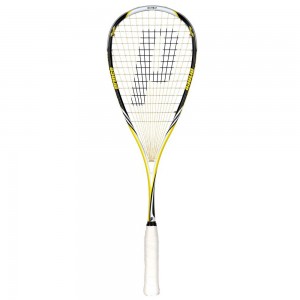To deceive someone is to cause them to believe something that is not true, typically in order to gain some personal advantage. In the game of squash this becomes a vital thing. Being able to deceive your opponent becomes a key element in squash as it is fundamentally one of the best ways to win a rally. Deceptive shots, either by accident or by choice, create an element of surprise that will throw off any opponent. Deception is an art; a great strategy in the game of squash that highly rewards those who are able to master it.
Squash is a deception game. The ability to play with your opponent’s mind becomes a great advantage when playing squash. It is arguably the hardest strategy to develop; but, when successfully developed, it is the most rewarding one. Whether it is a head fake or a surprise cross from the front, any shot that eventually deceives the opponent will create more opportunities to keep adding pressure in the rally.
Most deceptive shots involve identical racquet preparation on every shot and good wrist strength combined with a fast racquet movement. The ‘hold’ on open shots will reduce the chances of an opponent being able to read the next shot. A player would ideally hold the racquet in the same position for as long as possible before hitting the ball hence increasing the chances of misleading the opponent. Also, a player can ‘fake’ the racquet movement involving a certain type of shot and then continue to hit a completely different shot. For example, a player could make it look as if they were going to hit a drop shot by lowering their shoulder, but then go on to hit a hard cross court by quickly snapping the racquet using their wrist. These combination of deceptive plays will create surprise in a player’s game giving them a big advantage against their opponent.
The element of surprise plays a big role in a squash match. When able to surprise an opponent during a match, players will find themselves with various opportunities to win the point. If a point is not won straight away after a deceptive shot, the opponent will have to use extra energy to return the shot. If the latter occurs the opponent will most likely return an open since they will be out of position due to the unexpectedness of the player’s shot. For example, if an opponent is expecting a drop shot and is then surprised by a cross towards the back, they will have to change direction and run towards the back of the court in order to return the ball. In this case they will be out of position when hitting the ball thus increasing the possibility of returning a shot than can be easily attacked by the player. These are great gains in a match since the opponent’s physical energy is depleted while putting them under heavy pressure. This has been seen throughout the sport’s history where some great players have shown incredible deceptive skills that have left their opponents baffled.
A great example of deceptive play comes from a Canadian squash legend and former World Number 1: Jonathon Power. Considered to be one of the greatest shot makers in the history of the game, ‘The Magician’ kept fans on their toes every time he played demonstrating an amazing display of deceptive shots. Here is a video of his most famous deceptive shot where he does a perfect backhand fake on the back of the court to then hit an amazing drop shot that leaves his opponent completely static (0:13-0:31):
Another example of a great deceptive shot is James Willstrop’s famous double fake against Ramy Ashour:
Deception pays off very well in squash. Any player who is able to develop a strong deception game will have a great advantage against any type of opponent. This is one of the most powerful tools in the game of squash and it is widely used in many different ways by the best players in the world. Creating an element of surprise on court is essential whenever an opportunity to attack arises. The art of deception is one to be acquired by any player who aims for a much better squash game!

